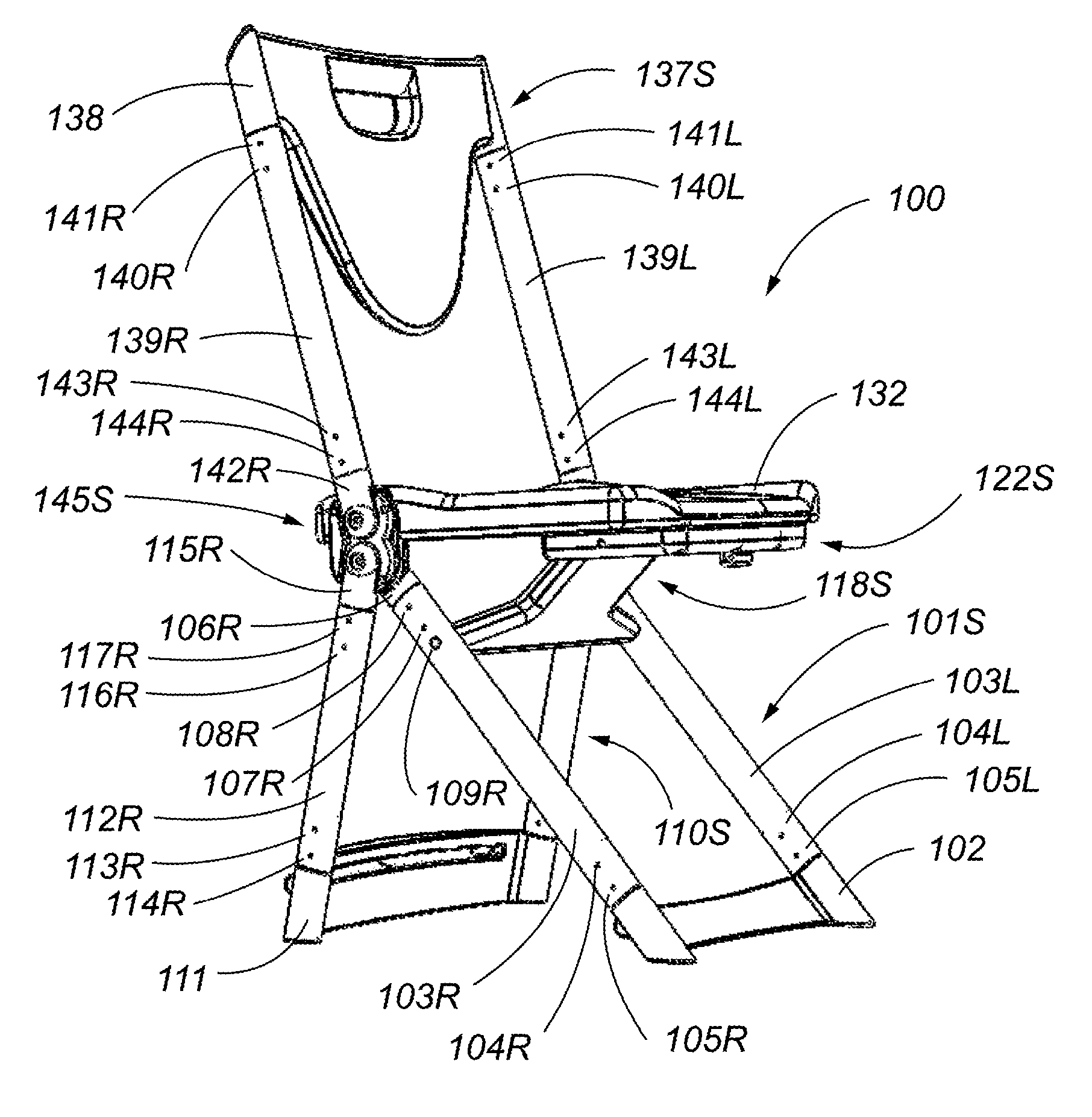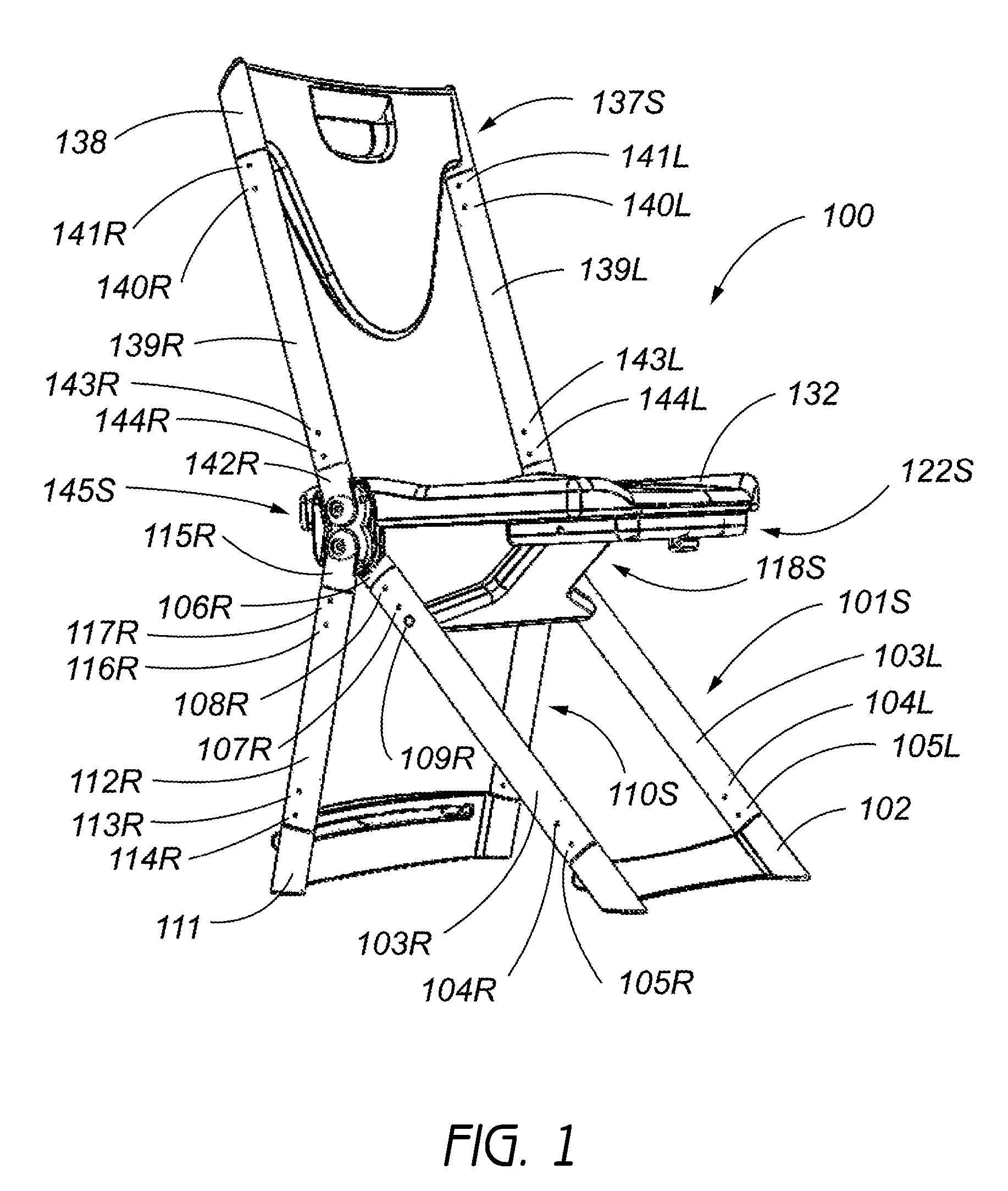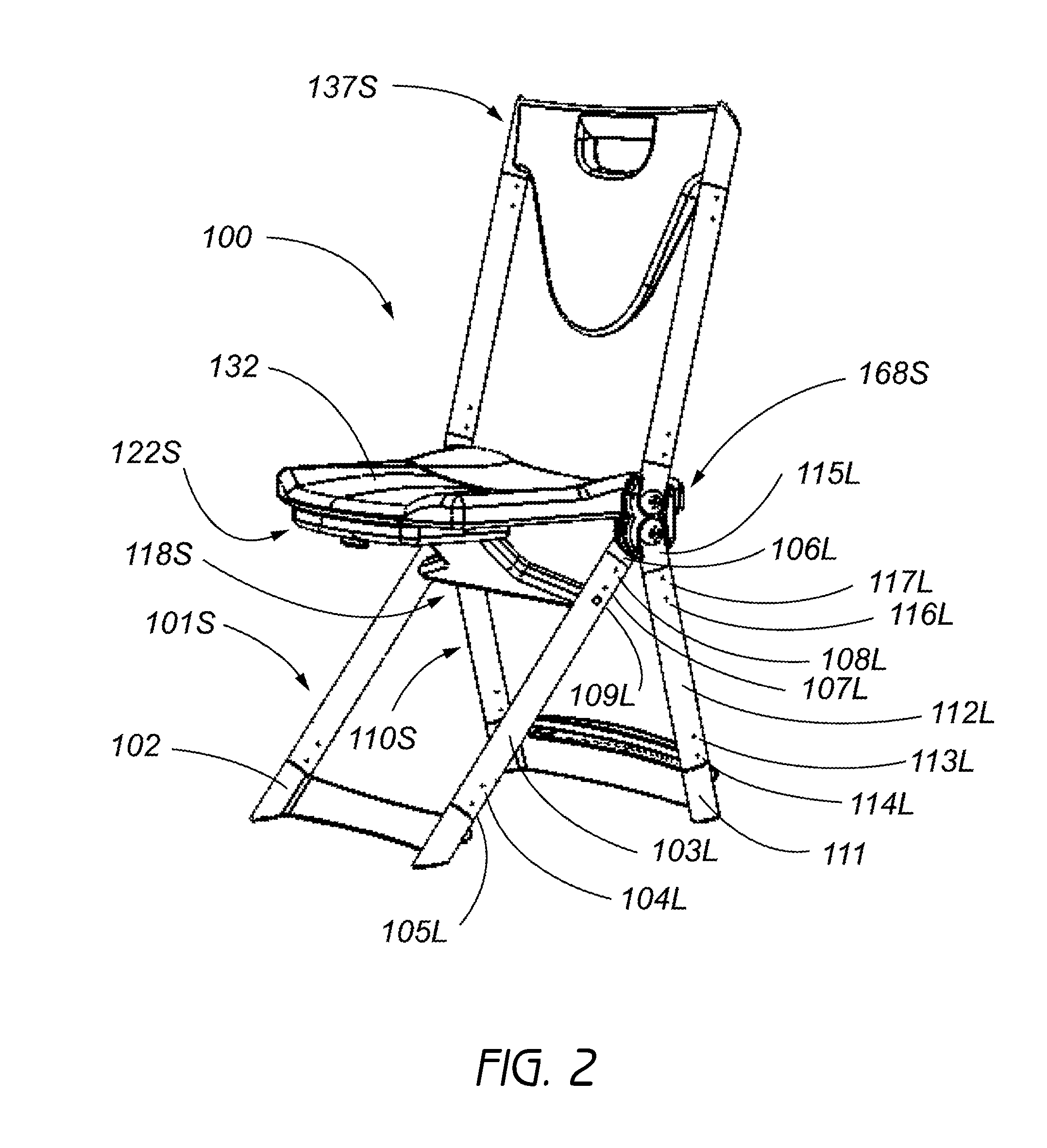Folding chair
a folding chair and seat technology, applied in the field of folding chairs, can solve the problems of lack of appropriate solutions, poor quality of the type 1 chair, and inability to meet the requirements of contract quality standards, and achieve the effect of increasing the bottom weigh
- Summary
- Abstract
- Description
- Claims
- Application Information
AI Technical Summary
Benefits of technology
Problems solved by technology
Method used
Image
Examples
Embodiment Construction
[0051]Reference will now be made to the drawings wherein like numerals refer to like parts throughout. FIGS. 1-5 illustrate an embodiment of an open folding chair assembly 100 that is arranged and configured in accordance with certain features, aspects and advantages of the present invention. In some embodiments, the open folding chair assembly 100 comprises a seat 132 to which is attached a right gearbox subassembly 145S in a manner described below. The right gearbox subassembly 145S preferably is on the right side of the folding chair as defined by a user while sitting in the folding chair 100. In FIG. 2, a left gearbox subassembly 168S also is shown attached to the seat 132 on the left side in a manner similar to the right gearbox subassembly 145S. The gearbox subassemblies 145S, 168S control the folding motion of the chair 100 during opening and closing and are described in more detail below.
[0052]In the illustrated configuration, a front leg subassembly 101S is fastened to the ...
PUM
 Login to View More
Login to View More Abstract
Description
Claims
Application Information
 Login to View More
Login to View More - R&D
- Intellectual Property
- Life Sciences
- Materials
- Tech Scout
- Unparalleled Data Quality
- Higher Quality Content
- 60% Fewer Hallucinations
Browse by: Latest US Patents, China's latest patents, Technical Efficacy Thesaurus, Application Domain, Technology Topic, Popular Technical Reports.
© 2025 PatSnap. All rights reserved.Legal|Privacy policy|Modern Slavery Act Transparency Statement|Sitemap|About US| Contact US: help@patsnap.com



